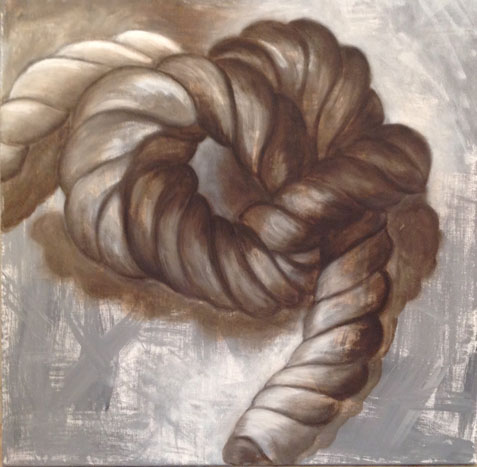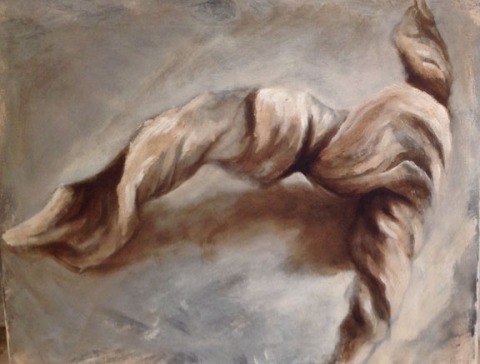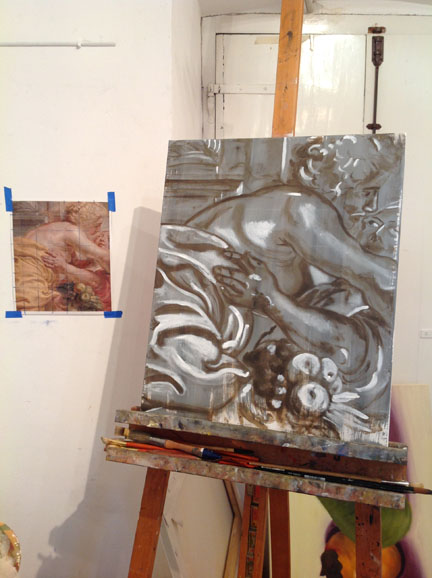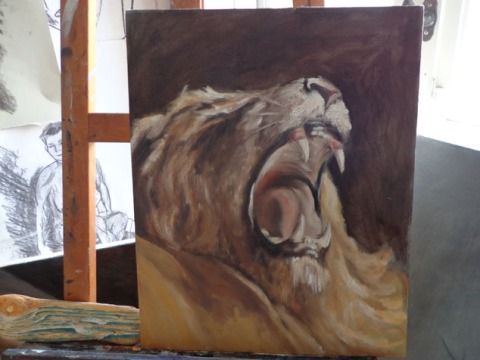The Rubens Project
12, November 2013 § 4 Comments
This fall, six advanced painting students are working with me to discover Rubens’ painting technique. To delve into Rubens’ style we studied the twisted forms of a knotted rope and a gnarled stick to imitate his brushstroke which often follows a spiraling line. We see it in the manes of his horses and the fabric of capes, in beards and in clouds. It was also important to learn to highlight economically with white as this is the primary way in which Rubens creates dimension. So our first study involved working on toned paper with white conte (above) and looking for expression of the twisted form. We then continued this investigation with paint (below).

Copying a master work is the best way to educate the eye and hand so our next step was to copy a passage of Rubens’ work. An enlarged section is easily obtained by perusing his work on Google Art Project. It is quite clear what the layers are and how they are preserved or covered by subsequent paint. Rubens seems to do so little but each brushstroke is amazingly rich in information. Not only is the color of the object’s surface there but also its texture, tone, temperature, direction of thrust and lighting condition. He accomplishes with one stroke what others would with many.
We are adding chalk to the paint as recent scholarship has detected the presence of it in his work. Chalk adds a textural component to the paint and helps it to dry quickly.
Meanwhile we are composing a large canvas to include five or six figures which will give each student a chance to contribute to the piece.





That sounds so wonderful, the images are amazing!
Very cool indeed!
This is really great, Jane. Do you know, or is it known, about his preparatory sketch/underpainting techniques? His work often seems so organic and wholly formed – it would be interesting to study it from its earliest stages – much like you teach the techniques of Vermeer.
Anyway, I wish I could be in this class!
Hi Ted, Nice to hear from you. We know that Rubens usually worked on a light grey imprimatura then developed a raw umber drawing which he highlighted with white oil mixed with chalk. After this he glazed some colors and reapplied lights, keeping his shadows thin and transparent. It’s a simple and efficient method which depends on drawing skills to succeed. We will post more of our efforts in the future.